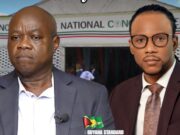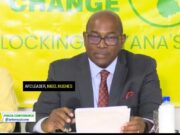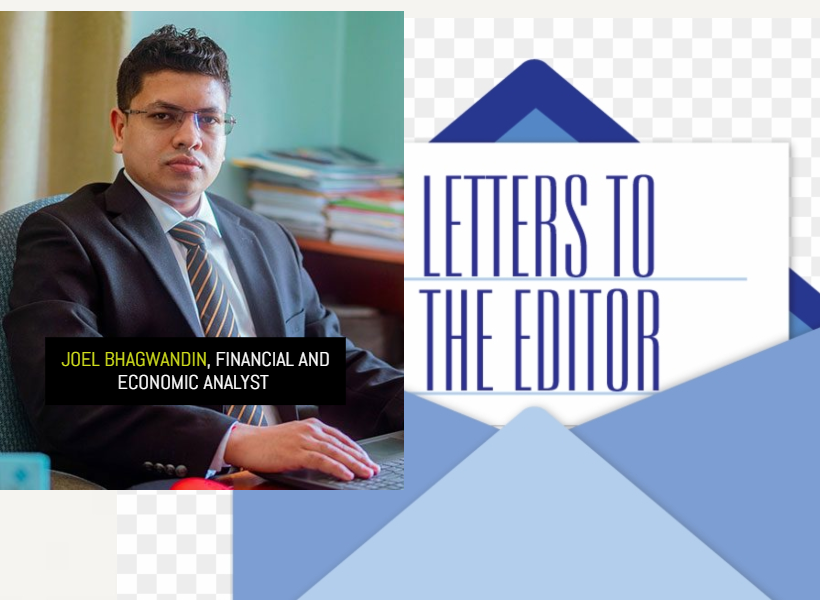Dear Editor,
Melandi Janki et.al. have an issue with the Government of Guyana (GoG) moving to the Caribbean Court of Justice (CCJ) to appeal the case involving the Environmental Protection Agency (EPA) and ExxonMobil Guyana (EMGL) in relation to the provision of financial assurance.
The manner in which they have protested this move by the Government suggests that the Government has committed a wrongful act. But the absurdity of such protestation seems to have escaped the proponents and others alike. What is so wrong with filing an appeal to the CCJ, the highest Court of Appeal for Guyana, for the full and final determination of such legal matters? Of course, the Government is perfectly in order to do so because it is a matter that would have dire consequences for the country and its people, either way.
The proponents strongly contend that the ruling handed down by the High Court whereby EMGL was ordered to lodge an unlimited parent company guarantee is provided for in the law and that the ruling is consistent with the law―that is, the Environmental Protection Act (1996) (the EPA Act), inter alia, the Environmental Permit (EP).
Having previously examined the High Court’s ruling together with the Environmental Permit and the EPA Act, there appears to be an unfortunate error in the findings of the High Court’s ruling. The learned Judge relied, to a large extent, on Condition 14 of the EP as the basis for his ruling.
However, there is no such provision under Condition 14 of the said Permit, wherein it is expressly stated that EMGL is obligated to comply with an “unlimited” Parent Company Guarantee Agreement. Rather, the provisions set out in Condition 14 establishes an insurance liability amount that conforms to that which is the norm in the international petroleum industry. In other words, insurance liability coverage that is in keeping with international best practice in the global industry.
Further, the provisions in Condition 14.3 establishes that “the forms of financial assurance shall be guided by an estimate of the sum of the reasonably credible costs, expenses, and liabilities that may arise from any breaches of this Permit.” Emphasis hereof is placed on the phrase “estimate of the sum of the reasonably credible costs…”.
Most unequivocally, there is absolutely no such provision in Condition 14 of the EP, or in any other Conditions set out in the EP that implies, or explicitly states that EMGL shall provide coverage for uncapped liability, viz-á-viz, an “unlimited” insurance coverage or parent company guarantee. Bearing in mind that there is no such thing as an “unlimited insurance coverage”.
An insurance coverage is a financial risk mitigation and/or hedging instrument, which means that no insurance company will ever provide an unlimited coverage, simply because an unlimited liability cannot be priced.
Moreover, specific reference was made to condition 14.10 by the learned Judge in his ruling where he stated that the conditions therein imposed upon Esso “unlimited parent company guarantee”. To the contrary, condition 14.10 actually stated that the Permit Holder and its Co-Ventures undertake to provide “adequate financial resources”, which contradicts the ruling of unlimited liability. The terms “adequate” and “unlimited” have very different meanings by definition.
The procedure in ascertaining or quantifying the value of the liability insurance or assurance coverage and/or guarantee―is at best a subjective process. It is precisely for this reason that the EP did not impose a defined time frame by which such insurance must be obtained and be in place, other than to state, by a “reasonable” time frame.
In this regard, due consideration has to be given to all of the other conditions that would have to be complied with by EMGL as set out in the EP in relation to minimizing and/or mitigating the potential adverse environmental damages or risks. For example, the safety procedures in place; training; and capacity building in oil spill response; coupled with the requirement for a capping stack in country and the maintenance of a subscription with a manufacturer of the equipment. These are some of the factors that would have to be considered in order to reasonably estimate the amount for the insurance liability.
It is worth noting that prior to the 2010 catastrophic BP oil spill in the Gulf of Mexico which cost BP in excess of US$60 billion in liabilities, the capping stack device was not yet developed. It was after this event that the capping stack was developed which can be placed on top of a well head to control the flow of an emergency or unplanned release of hydrocarbons. The capping stack can be operated remotely to control the flow of oil and gas.
While the threat of an oil spill could have dire consequences, which can be mitigated―equally, the cessation of oil production can also pose dire consequences for the economy and the people. To this end, at current levels of production and current crude oil prices, the revenue flow to the treasury finances over 20% of the national budget and at peak production, the annual losses from the oil and gas sector would be in excess of $2 trillion.
More importantly, adequate provisions are in place in the laws of Guyana, namely the EPA Act and the Petroleum Activities legislation mandating that the oil companies (Contractor (s)) shall be fully liable in the event of an oil spill or any damage to the environment.
Against the foregoing, it is the respectful view of this author that the Government is in perfect order to appeal the High Court’s ruling at the level of the CCJ.
Yours sincerely,
Joel Bhagwandin













